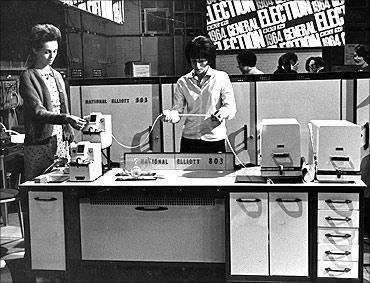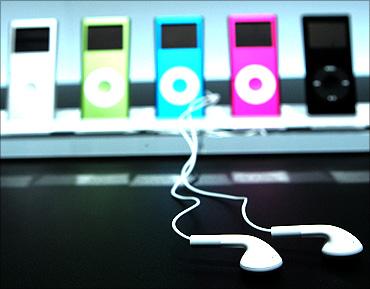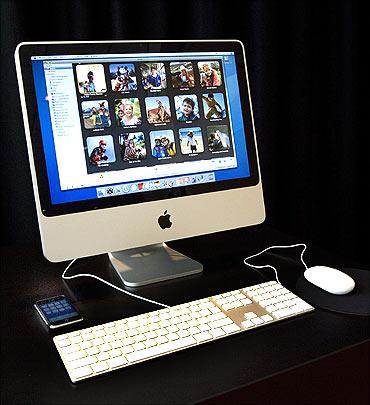A look at 63 years of computers!
History of computers can be traced way back to 1939 when Hewlett-Packard was founded.

David Packard and Bill Hewlett found Hewlett-Packard in a Palo Alto, California garage.
Their first product was the HP 200A Audio Oscillator, which rapidly becomes a popular piece of test equipment for engineers.
6th December 1948: An electrical ‘brain’ which stores up billing information installed in a Philadelphia telephone exchange by the Bell Telephone Laboratories.

October 1953: A large computer used for calculating staff wages at J Lyons & Co, Cadby Hall, London.

1955: Four reels of magnetic tape on which is recorded the entire bible.
The process took six months of work on the Unityper.

1955: A man operating scientific equipment at the Nobel Institute at Stockholm, Sweden.

February 26, 1955: Ferranti’s electronic brain is being installed in London to help industrial firms solve problems, including wage calculations, life tables for insurance companies, readership surveys and forecasting election results.

October 1956: British scientist Gordon Pask co-inventor of an electronic brain used as a teaching aid called Eucrates I.

January 26, 1959: Dr H A Thomas, manager of the Instrumentation and Control section of Unilever’s engineering department gives the Faraday lecture at London’s Festival Hall.
His subject is ‘Automation’ and here he demonstrates the workings of an electronic calculator or computer.

October 15, 1964: Employees of the manufacturers of the computer being used for the BBC television marathon election result programme, checking over the computer in the BBC television studio.

July 22, 1966: British electronics inventor and innovator Clive Sinclair.

March 16, 1967: English film star Michael Caine plays the cockney spy Harry Palmer in Harry Saltzman’s film ‘Billion Dollar Brain’.
A Honeywell computer is the basis of a huge film set at Pinewood Studios.

June 1, 1979: A shopper carries boxes of computer toys and games in London’s Tottenham Court Road.

A man testing the Ferranti computer at the company’s factory in Moston, Manchester.

A man checking the installation of the Elliott 402 ‘Electric Brain’ at the British Instrument Industries Exhibition at Earl’s Court, London.
This electronic computer can solve complicated mathematical problems in one hour.

Bob Wright of Sharp Electronics in Mahwah, N.J., transforms the new Sharp Mobilon Tripad into a tablet for use as a digital notepad.
The Tripad’s unique hinge design allows it to be configured in three ways: standard notebook (clamshell), pen tablet (slate) and easel modes of operation.
Weighing just three pounds, the Tripad is one of the first new windows ce-based products with a large color touch-screen and nearly full-sized keyboard.

Apple Computer Inc intensified its challenge to conventional computer design on January 5, 1999 by unveiling five bright new colors for its unusual-looking iMac desktop machine.
The company also lowered the price on the iMac by $100 to $1,200 and boosted its processing power and storage capacity.

New iPod earphones are seen next to a display of the new iPod Nano at an Apple media event on September 12, 2006 in San Francisco.
Steve Jobs announced new iPods and video downloads from iTunes as well as a sneak peek at a device tenatively called iTV which allows you to channel iTunes to your television and is expected out in early 2007.

The new Nintendo Gameboy Advance, left, and one of the earliest handheld games, the Atari Touch Me are displayed side by side on June 21, 2001 in London.
The Atari vintage computer game, made in 1978, is part of an exhibition featuring 25 years of handheld electronic gaming and also launches the new Nintendo Gameboy Advance in Europe.

The new iMac is displayed after the then Apple CEO Steve Jobs introduced new versions of the iMac and iLife applications on August 7, 2007 in Cupertino, California.
The all-in-one desktop computers now have a slimmer design in aluminum casings with faster chips and glossy screens and is up to $300 cheaper then their predecessors.

Secretary of State Senator Hillary Clinton (D-NY) looks at her BlackBerry while on an elevator at the US Capitol in Washington, DC.

A man, wearing an EEG brain scanning apparatus on his head, plays a pinball game solely through willing the paddles to react with his brain at the Berlin Brain Computer Interface research consortium stand at the CeBIT Technology Fair on March 2, 2010 in Hannover, Germany.

Passengers from Finland watch a movie on a computer as they wait at St Pancras Station as airlines continue to ground aircraft due to volcanic dust in the atmosphere on April 19, 2010 in London, England.

Shoppers wait outside a Gravis computer store shortly before 8 am on the first day Apple’s iPad went on sale in Europe on May 28, 2010 in Berlin, Germany.
Source : Rediff

